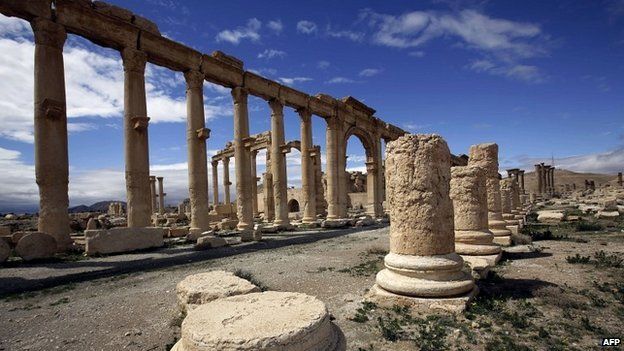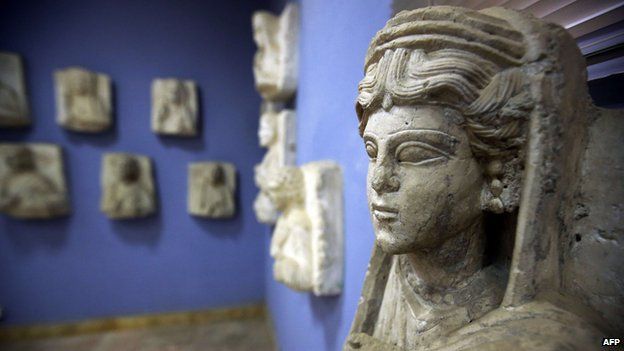Islamic State (IS) militants in Syria have entered the Unesco World Heritage site of Palmyra after seizing the town next to the ancient ruins, reports say.
Unesco says its destruction would be “an enormous loss to humanity”, but no damage has been reported there yet.
IS now controls the nearby airport, prison and intelligence HQ, the Syrian Observatory for Human Rights says.
The militants have previously demolished ancient sites in Iraq that pre-date Islam.
The BBC’s Jim Muir in Beirut says acute international concern over Palmyra might actually spur the jihadists on to make destroying the site a priority, since they delight in challenging and horrifying world opinion.
The ancient ruins are situated in a strategically important area on the road between the Syrian capital, Damascus, and the contested eastern city of Deir al-Zour.
Palmyra is also close to oil and gas fields which the Syrian government uses to generate electricity for areas under its control in the west of the country.

Palmyra rose to prominence under the Romans but its rulers later created a rival empire of their own

Hundreds of artefacts from Palmyra have been taken to Damascus, Syrian authorities say
How to preserve artefacts from wanton destruction?
Rising out of the desert, the site contains the monumental ruins of a great city, which Unesco and others consider one of the most important cultural centres of the ancient world.
Dating back to the 1st and 2nd Century, when the region was under Roman rule, Palmyra is dominated by a grand, colonnaded street.
Tadmur, the modern settlement next to Palmyra, would normally have a population of around 70,000, but it has recently been swollen by an influx of people displaced from other combat areas.
Syrian state media said pro-government forces had pulled out after “assuring the evacuation” of “most” of its inhabitants.
Talal Barazi, the Governor of Homs Province, which includes Palmyra, told the Associated Press that 1,300 people had fled the city over the past few days, and more were trying to leave.
An activist in Palmyra told the BBC that residents were being warned via mosque loudspeakers not to hide Syrian government soldiers in their homes.
BBC
 Q FM Africa's Modern Radio
Q FM Africa's Modern Radio